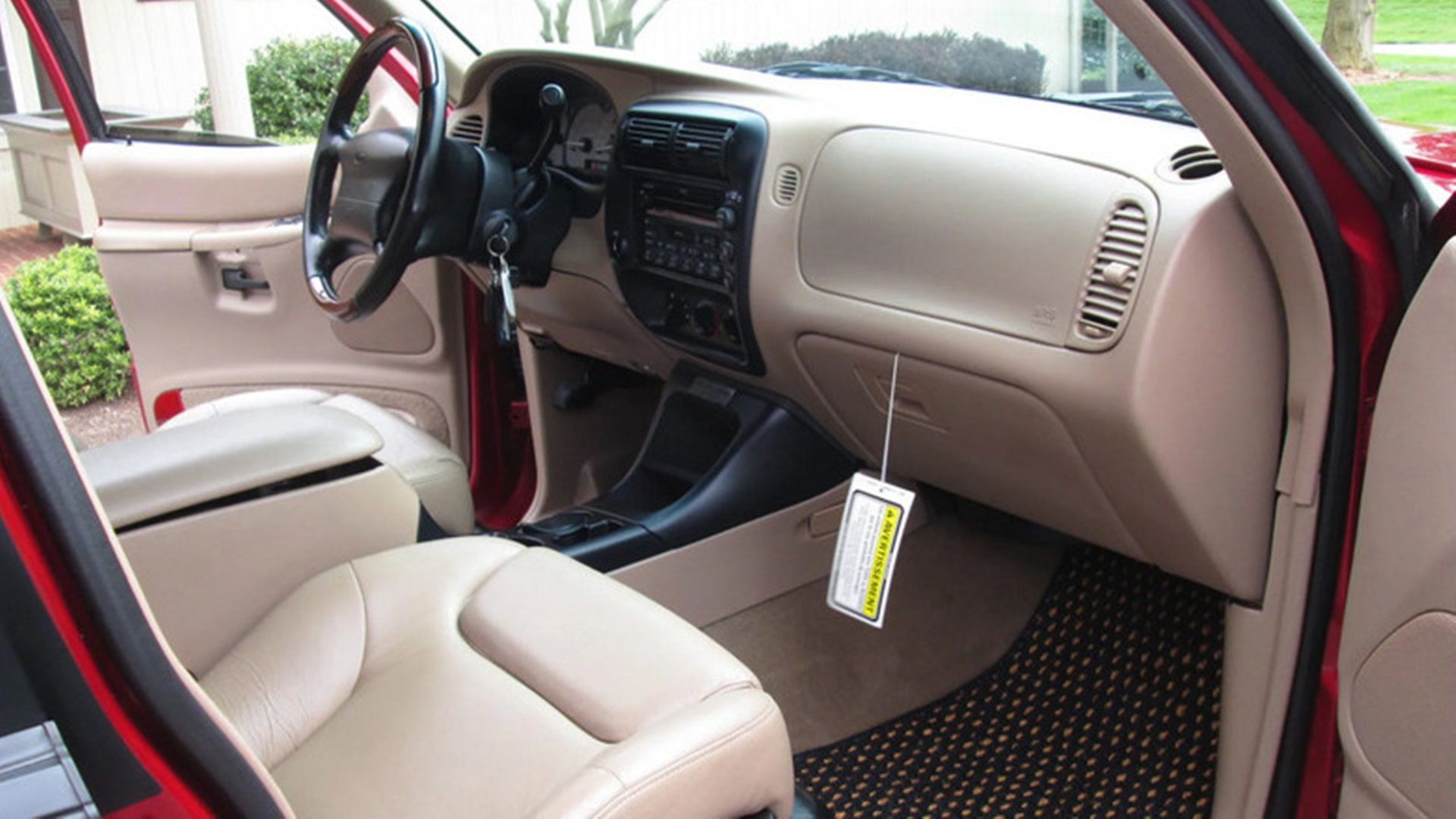Summary
- Saleen Automotive, famous for its performance parts on Ford Mustangs, also created the Saleen XP8, one of the first performance SUVs.
- The Saleen XP8 featured extensive exterior modifications, including a new body kit, carbon fiber hood, side skirts, rear spoiler, and 18-inch magnesium wheels.
- It had some interior touches like a carbon fiber steering wheel, Saleen gauges, racing pedals, and optional Recaro seats.
Saleen Automotive is renowned for its performance parts on Ford Mustangs. However, they also created one of the first performance SUVs on the market called the Saleen XP8.
The GMC Typhoon may have been the first performance SUV, but the XP8 was a close second. Saleen, known for tuning Ford Mustangs, decided to modify the Ford Explorer and create the XP8, which remains one of the coolest old-school Ford Explorers you can buy today.
It Was Based On The Second Generation Ford Explorer
The Saleen XP8 was based on the second-generation Ford Explorer produced from 1995-2001. It specifically used the four-door Explorer XLT, which offered an optional 5.0-liter V-8 engine with 210 horsepower and 254 pound-feet of torque. This engine option was added in response to competitors like the Jeep Grand Cherokee and the Land Rover Discovery, which offered V-8 engines.
Saleen made extensive changes to the Ford Explorer, including a new body kit and various mechanical upgrades. The XP8 was offered with two engine options, including a supercharged version. However, these enhancements came at a premium price.
The Saleen XP8 Had Exterior Modifications
The XP8 featured several exterior modifications to differentiate it from the regular Explorer. Saleen added a full-body kit, which included front and rear bumpers, carbon fiber hood, side skirts, body cladding, and rear spoiler. The car also had carbon fiber mirror caps, Saleen graphics, serialization plaques, and 18-inch magnesium wheels. The front fascia received a new lower bumper design, and the grille was painted to match the body color. The side steps were replaced with side skirts for a lower appearance, and new bottom body cladding was added for a more rugged look. The XP8’s 18-inch magnesium wheels were a rare feature at the time and came with Pirelli Scorpion Zero performance tires.
A Regular Ford Explorer Interior
The interior of the XP8 mostly remained stock, as emphasis was placed on exterior modifications and mechanical upgrades. However, Saleen did make some changes to add a special touch to the interior. These changes included a carbon fiber steering wheel, Saleen gauges, racing pedals, and optional front Saleen branded leather Recaro seats. The center console featured a plaque indicating the model year and production number of each XP8.
Supercharged V-8 And Other Modifications
Ford offered the Explorer with a 5.0-liter V-8 engine, which was the primary choice for XP8 models. This engine produced slightly more power than the stock version, with 222 horsepower and 298 pound-feet of torque. The supercharged version, on the other hand, offered significantly more power and torque. The XP8 models could be rear-wheel drive or four-wheel drive, depending on the engine option, both coupled with a four-speed automatic transmission.
Supercharged V-8 Engine Specifications
|
Engine |
Supercharged V-8 |
|---|---|
|
Displacement |
5.0 liters |
|
Power |
286 Horsepower |
|
Torque |
333 pound-feet |
|
Transmission |
Four-speed automatic |
|
Drivetrain |
All-wheel drive |
The XP8 also received mechanical upgrades such as a Racecraft suspension that lowered the car by 2 inches. Other performance enhancements included Bilstein struts, stronger sway bars, Alcon brakes (optional), a performance air filter, and a Borla exhaust system.
The Saleen XP8 Is Special And Limited
The Saleen XP8 was introduced in 1998, during the second generation of the Ford Explorer. The plan was to produce 300 units, but they fell short of this target. Only around 125 XP8 examples were produced, and even fewer are still on the road today. This limited production makes them highly sought after.
During the 90s, the MSRP for the XP8 exceeded $52,000, which was a significant amount at that time. By comparison, the base Explorer XLT started at $24,740. However, if you wanted a special SUV like the XP8, you had to be willing to pay the higher price.
There was also a more limited version called the XP6, which was created accidentally when Ford sent Saleen a batch of V-6 Explorers. Saleen decided to upgrade them similar to the XP8 rather than returning them to Ford, resulting in the creation of the Saleen XP6. The main difference was the engine and transmission. The XP6 models are rare and hard to find, and there are no official numbers available for their production.
Despite the recent craze for SUVs and the rising values of old SUV models like Land Cruisers and Defenders, the prices for XP8 models have not skyrocketed yet. This may be because they were often overlooked until recently when they started changing hands. The Saleen XP8 was one of the first SUVs to pave the way for the popular performance SUV segment we see today.
Clean examples of the XP8 are currently fetching just over $20,000 with over 161,000 miles on the odometer. As awareness of the XP8 grows and cleaner, low-mileage examples become available, we may start seeing record prices for this special model. It was a unique vehicle that predates other high-performance SUVs like the Mercedes ML55 AMG and Porsche Cayenne Turbo.









